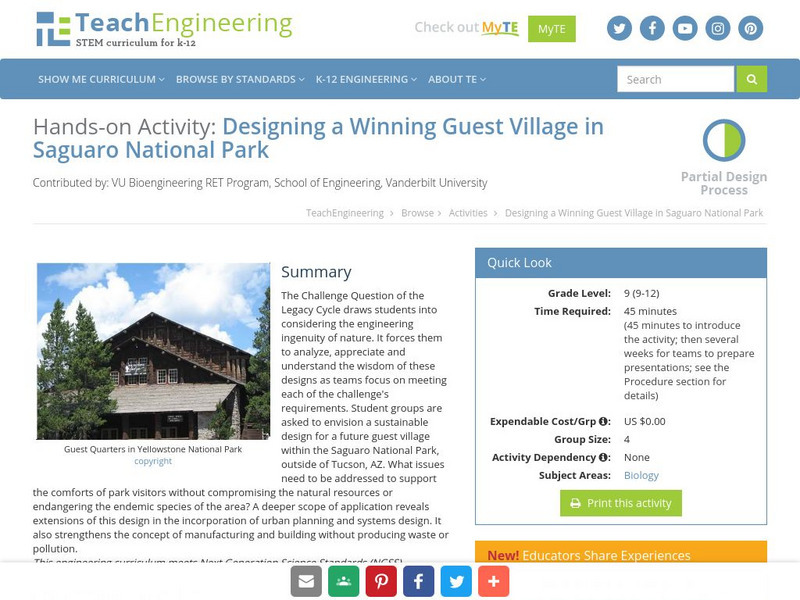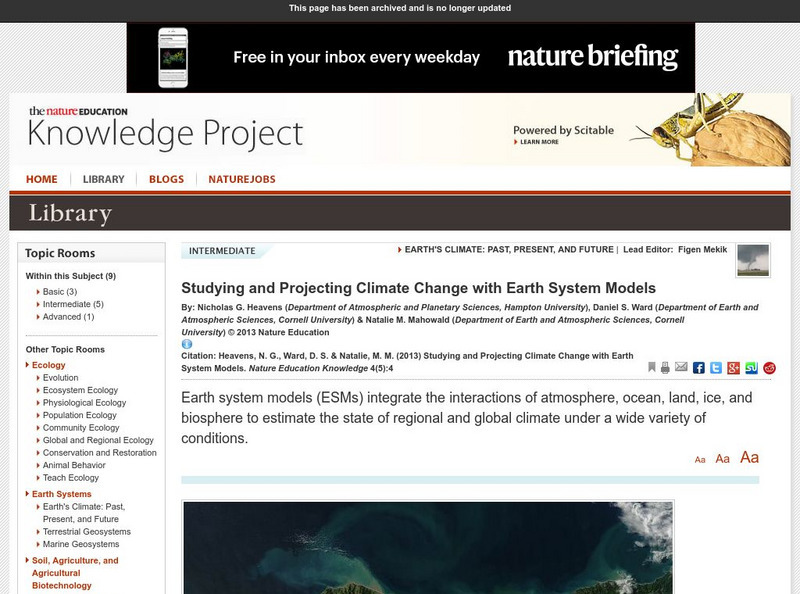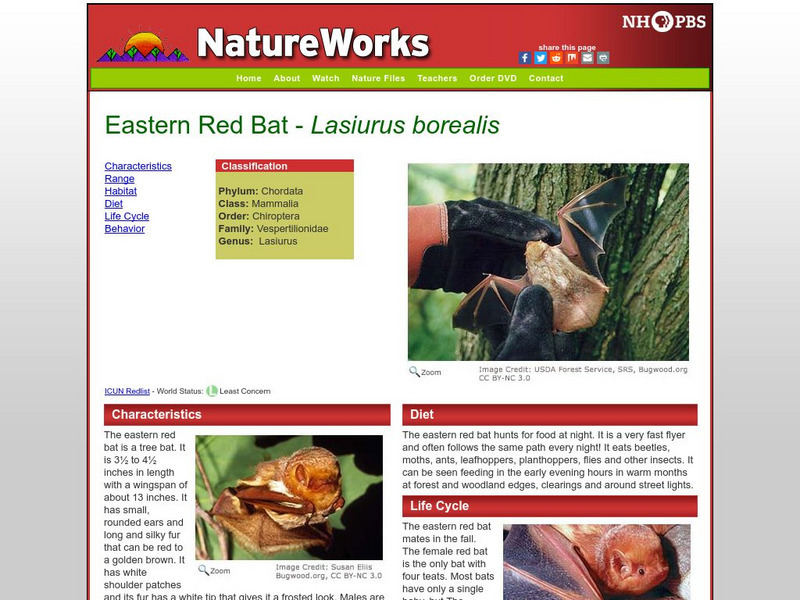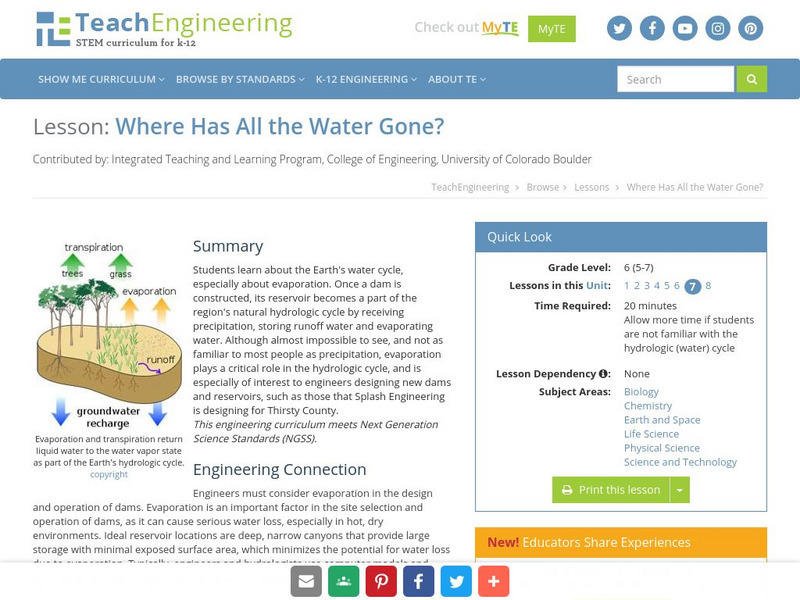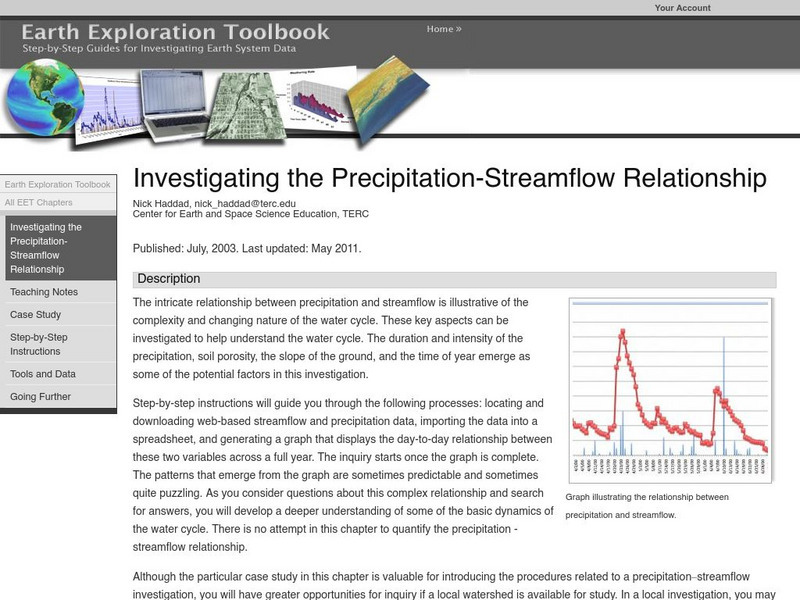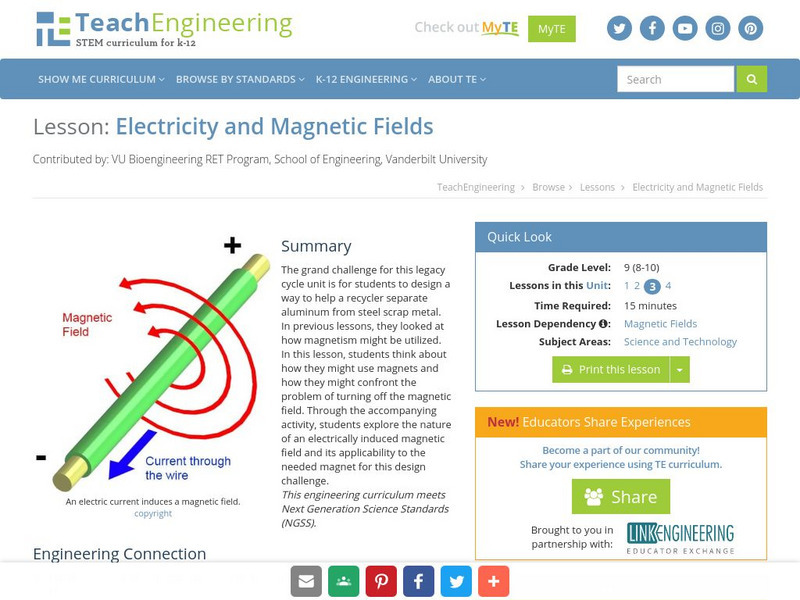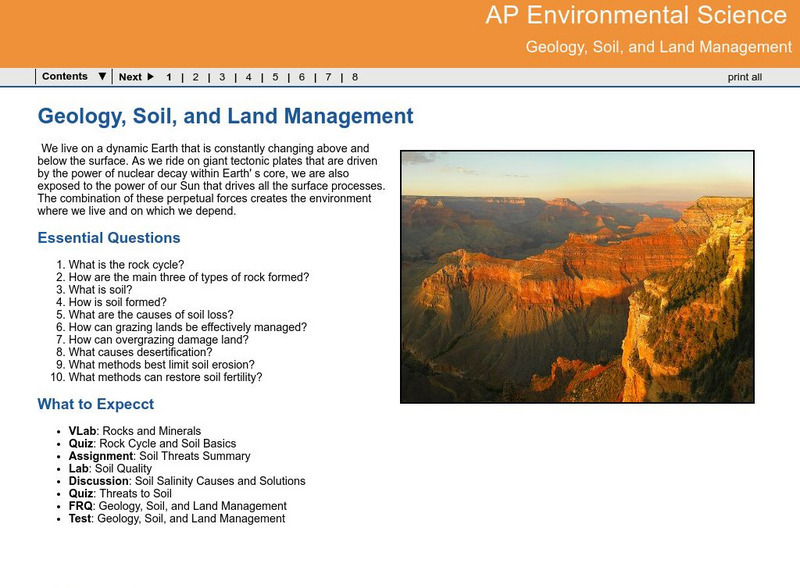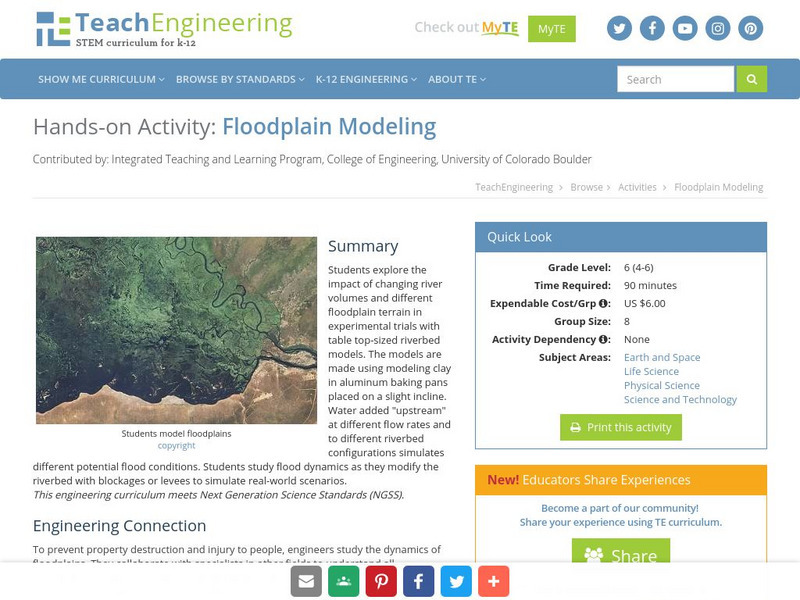Hi, what do you want to do?
Massachusetts Institute of Technology
Mit: Open Course Ware: Courses: Civil Environmental: Ecology I: The Earth System
College-level online course highlighting the fundamentals of ecology. Course topics include coevolution of the biosphere, geosphere, atmosphere, and hydrosphere; photosynthesis and respiration; and the carbon, nitrogen, and water cycles....
Nature Research
Nature Education: Energy Economics in Ecosystems
This article discusses how plants and microorganisms, until recently, have mostly controlled how much carbon dioxide is released into an ecosystem, and explains how this process works. Humans' burning of fossil fuels has upset the...
Harvard University
Harvard Smithsonian: Everyday Classroom Tools
The focus of this series of lessons is to engage students in an exploration of the world around them. The emphasis is on inquiry as students learn about the earth, sun, light, shapes and more.
ArtsNow
Arts Now Learning: Magic Rocks [Pdf]
In this lesson, students work in groups with each acting as a predator, prey, or family member in a particular habitat. They present their habitat performance to the class and students identify the habitat and animal relationships. Then,...
TeachEngineering
Teach Engineering: Designing a Winning Guest Village in the Saguaro National Park
The Challenge Question of the Legacy Cycle draws the student into considering the engineering ingenuity of nature. It will force him to analyze, appreciate and understand the wisdom of these designs as the student team focuses on meeting...
PBS
Pbs Critter Guide: Butterfly
Can you name the four parts of the life cycle of the butterfly? This site features a brief but detailed description of the life cycle of a butterfly and some other fun facts about this interesting insect.
Louisiana Department of Education
Louisiana Doe: Louisiana Believes: Ela Unit: Grade 2: Thirsty Planet
Second graders learn about the water cycle and the role of water in nature. Through various descriptions of water's journey throughout the world and the lives that depend on it for survival, 2nd graders come to appreciate the importance...
TeachEngineering
Teach Engineering: Rock Solid
Rocks cover the earth's surface, including what is below or near human-made structures. With rocks everywhere, breaking rocks can be hazardous and potentially disastrous to people. Students are introduced to three types of material...
Other
Academy of Natural Science: Butterfly Life Cycle
With this resource, learners examine the four stages of butterfly metamorphosis in this succinct presentation from the Academy of Natural Sciences in Pennsylvania.
Canadian Museum of Nature
Canadian Museum of Nature: Monarch
The Monarch butterfly is widely studied by students when they learn about insect life cycles. Basic information about the Monarch and threats to its survival are described here. There are also pictures showing the Monarch in various...
Nature Research
Nature Education: Studying and Projecting Climate Change
A model organizes what we think we know about something in order to predict how it might behave in the present, future, or past as well as how it might respond to external influence. Models are especially useful when direct, controlled...
Smithsonian Institution
National Museum of Natural History: Ocean Planet
Detailed website that was a companion to a 1995 traveling exhibit of the Smithsonian. Links to lesson plans and other educational materials are at the bottom of the page. Enter the exhibition to explore the world of the ocean.
PBS
Pbs Nature Critter Guide: Crows
Research shows that crows are considered the most intelligent type of bird. Discover more about these black feathered friends through this resource filled with fun facts and information. Students will learn more about the social...
PBS
Nh Pbs: Nature Works: Red Bat
The red bat can be found in forests from southern Canada through the United States and down to Chile and Argentina. The content of this site includes a look at this species' characteristics, range, habitat, diet, life cycle, and behavior.
Biology Pages
Kimball's Biology Pages: Antibacterial Agents
This site lists the different antibiotics, tells how they disrupt the life cycle of the bacteria, and give examples of where in nature the antibiotic is from- i.e., penicillin -> bread mold.
TeachEngineering
Teach Engineering: Where Has All the Water Gone?
Students learn about the Earth's water cycle, especially about evaporation. Once a dam is constructed, its reservoir becomes a part of the region's natural hydrologic cycle by receiving precipitation, storing runoff water and evaporating...
Science Education Resource Center at Carleton College
Serc: Investigating the Precipitation Streamflow Relationship
The intricate relationship between precipitation and streamflow is illustrative of the complexity and changing nature of the water cycle. These key aspects can be investigated to help understand the water cycle. The duration and...
US Geological Survey
U.s. Geological Survey: Groundwater Information by Topic
A massive amount of information about groundwater. Topics covered include groundwater basics, humans and groundwater, groundwater quality, and its place in the water cycle. Includes true-and-false quiz and a Q&A section, as well as a...
Other
Study of Northern Virgina Ecology: Black Carpenter Ant
Lots of information about the black carpenter ant. Learn about their physical characteristics, colonies, life cycle, food sources, and predators. A detailed chart listing many plants and animals permits exploration of their relationships...
NASA
Nasa: Oceanography
Join NASA in its study of oceanography and learn about the Earth system, the physical ocean, and life in the ocean. Try out the Giovanni: Earth Data Visualization Tool and access satellite-derived data to enhance the learning experience.
TeachEngineering
Teach Engineering: Electricity and Magnetic Fields
The grand challenge for this legacy cycle unit is for students to design a way to help a recycler separate aluminum from steel scrap metal. In previous lessons, they have looked at how magnetism might be utilized. In this lesson,...
Georgia Department of Education
Ga Virtual Learning: Ap Environmental Science: Geology, Soil and Land Management
Students explore how Earth processes shape the land, and how important managing the land can be in response to these natural activities.
PBS
Pbs Learning Media: Dinosaur Train
Dinosaur Train sparks children's interest in life science and natural history. As they explore a variety of animals, children develop the inquiry skills and knowledge needed to help them think, talk and act like paleontologists. Choose...
TeachEngineering
Teach Engineering: Floodplain Modeling
Students explore the impact of changing river volumes and different floodplain terrain in experimental trials with table top-sized riverbed models. The models are made using modeling clay in aluminum baking pans placed on a slight...
Other popular searches
- Cycles in Nature Powerpoint
- Life Cycles in Nature
- Different Cycles in Nature
- Search Cycles in Nature
- Cycles in Nature Lab
- Cycles in Nature Maze








![Arts Now Learning: Magic Rocks [Pdf] Lesson Plan Arts Now Learning: Magic Rocks [Pdf] Lesson Plan](https://static.lp.lexp.cloud/images/attachment_defaults/resource/large/FPO-knovation.png)
